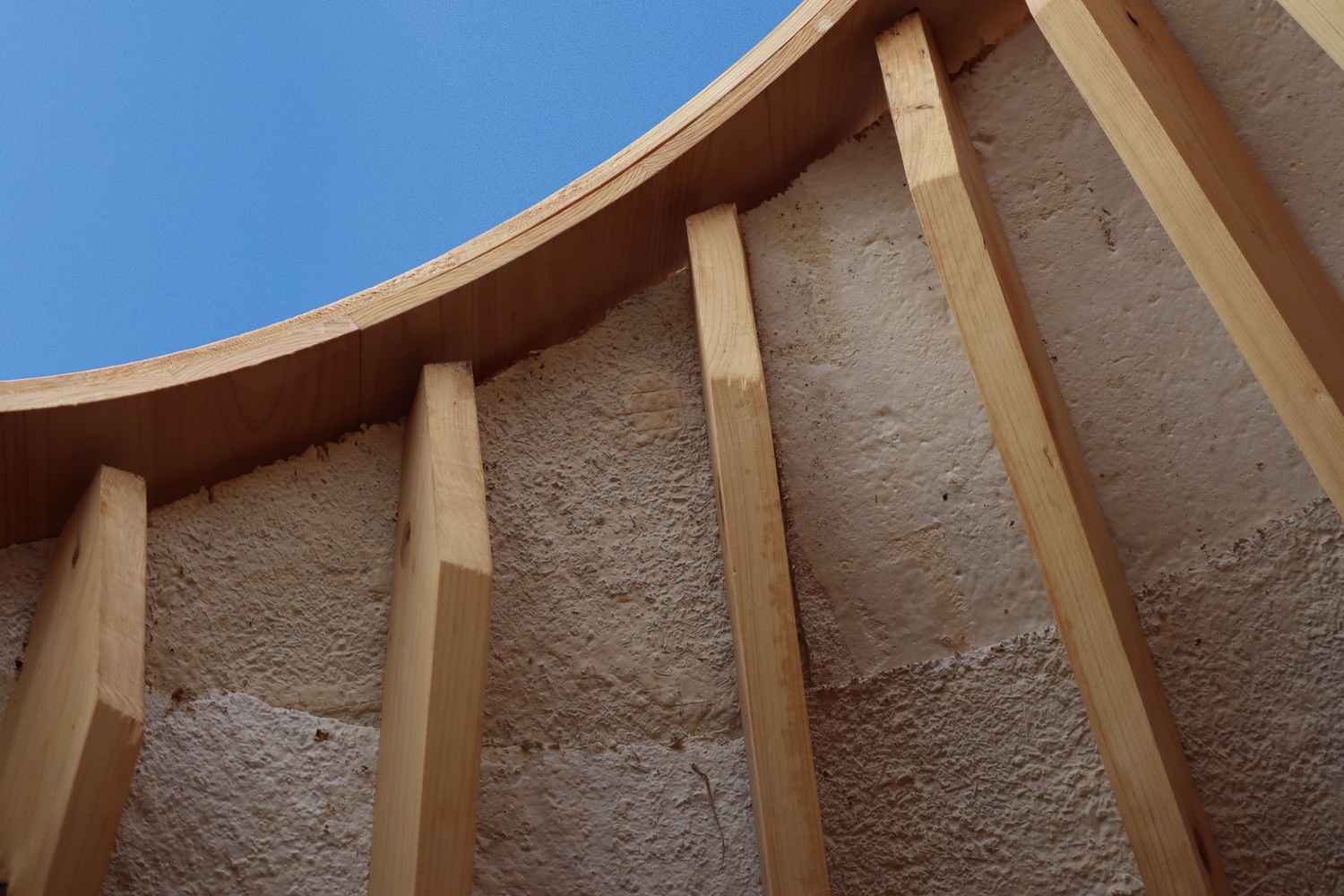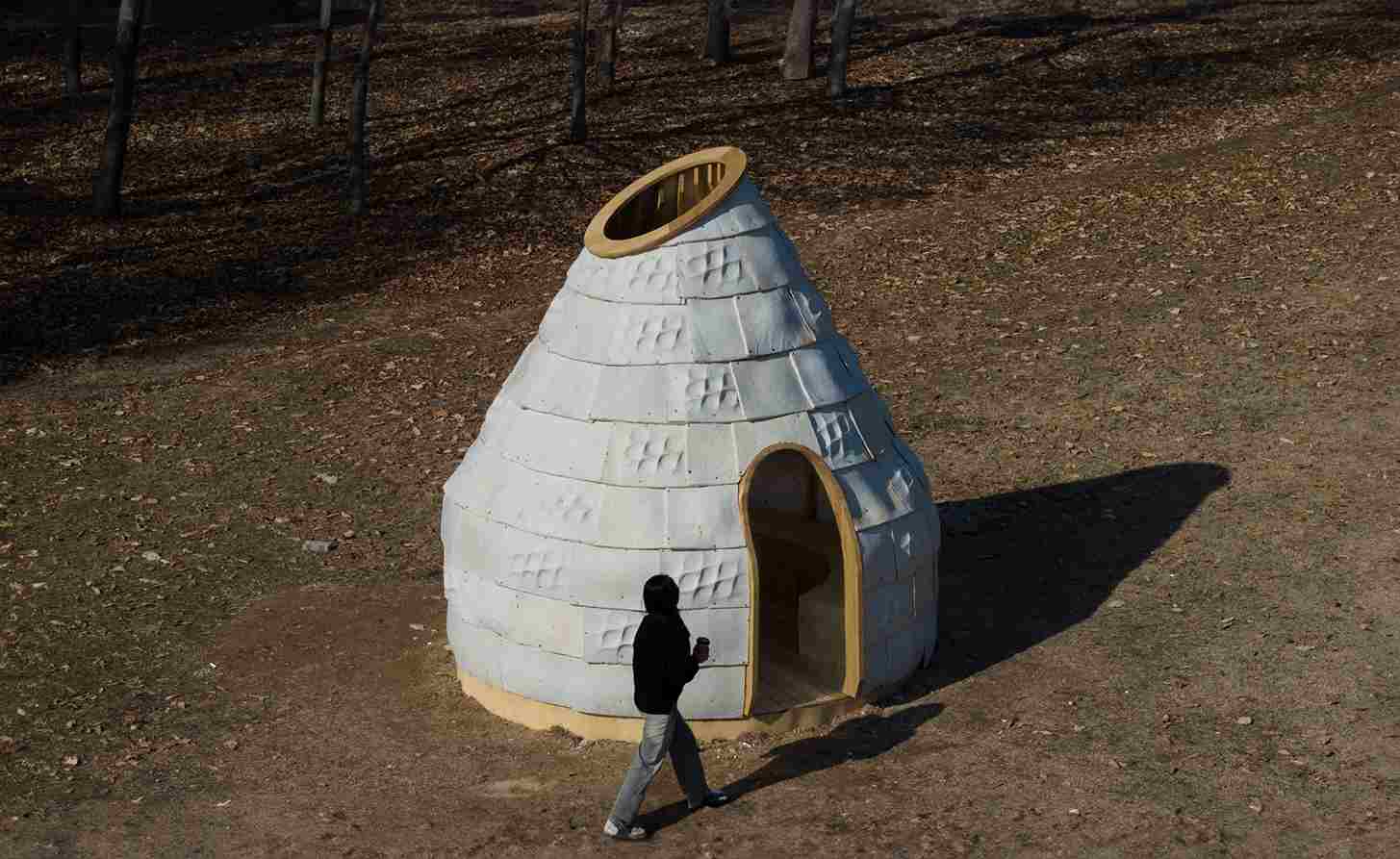
The architecture and construction industry is currently the world’s largest contributor to carbon emissions. One of the most promising directions in this search involves organism-based composite materials, which challenge the dominance of non-recyclable, non-degradable construction systems. In this context, the Mycelial Hut project positions mycelium as a viable architectural material. Rather than simply substituting one material for another, the project reframes sustainability by integrating growth, decay and design into a unified fabrication process. Know more about it on SURFACES REPORTER (SR).

These panels are grown inside precise molds that were produced using robotic 3D printing, creating a seamless interface between digital fabrication and organic growth.
Material testing
Designed by Yong Ju Lee Architecture and completed in 2024 at Seoul National University of Science and Technology, the Mycelial Hut serves as a full-scale demonstration of how biological materials can be meaningfully integrated into architecture. Conceived as a bio-hybrid pavilion, it is built on a wooden structural framework that provides strength and stability, while a series of customised mycelium panels form its outer shell. These panels are grown inside precise molds that were produced using robotic 3D printing, creating a seamless interface between digital fabrication and organic growth.

Industrial robotic arms were then incorporated into the workflow, enabling the production of large, customised molds that could accommodate complex shapes and meet architectural requirements.
Various mycelium substrates were evaluated for their growth rate, workability and structural potential. These experiments informed the development of mould geometries that could guide the growth of mycelium while ensuring predictable performance. Industrial robotic arms were then incorporated into the workflow, enabling the production of large, customised molds that could accommodate complex shapes and meet architectural requirements. Through this integration of robotics and biology, the project established a new fabrication method that moves beyond conventional manufacturing and points toward construction processes where materials are cultivated rather than extracted.

The wooden frame absorbs structural loads, while the mycelium functions as a lightweight, biodegradable envelope capable of insulation and atmospheric regulation.
Eco-friendly construction
This approach directly addresses the central challenges associated with fungal-based materials. Mycelium lacks the strength of steel or concrete and grows according to environmental conditions, making consistency a concern. Instead of attempting to replicate the behaviour of conventional materials, the Mycelial Hut project embraces the unique properties of mycelium and supports them through geometric optimisation, layering strategies and hybrid construction. The wooden frame absorbs structural loads, while the mycelium functions as a lightweight, biodegradable envelope capable of insulation and atmospheric regulation.

Mycelial Hut project embraces the unique properties of mycelium and supports them through geometric optimisation, layering strategies and hybrid construction.
The installation’s placement on an active university campus is deliberate. By situating the pavilion in a public, educational environment, the project brings discussions about sustainable architecture into everyday experience. Students, faculty and visitors encounter a structure that visibly embodies a different approach to materiality, which is based on biological growth cycles, localised production and eventual biodegradability. In doing so, the Mycelial Hut acts not only as a research prototype but as a catalyst for public imagination.

Conceived as a bio-hybrid pavilion, it is built on a wooden structural framework that provides strength and stability.
Project details
Project name: Mycelial Hut
Location: Seoul, South Korea
Studio: Yong Ju Lee Architecture
Area: 10 m²
Year: 2024
Lead architects: Yong Ju Lee
Technical team: Dachan Oh, Hakjoon Kim, Yejun Kim, Heon Lee, Wonseok Lee, Jeonggi Kim, Seonwoo Kim,Jaegong Choi, Seongmin Hong, Songju Yi, Seoyeon Bae, Thin Haythi Aung, DongUk Sohn, Yunjin Kim and Suhyeong You
Engineering and consulting > environmental sustainability: EarthForm
Photographs: Yong Ju Lee Architecture